Tag: black and white
December 14, 2013
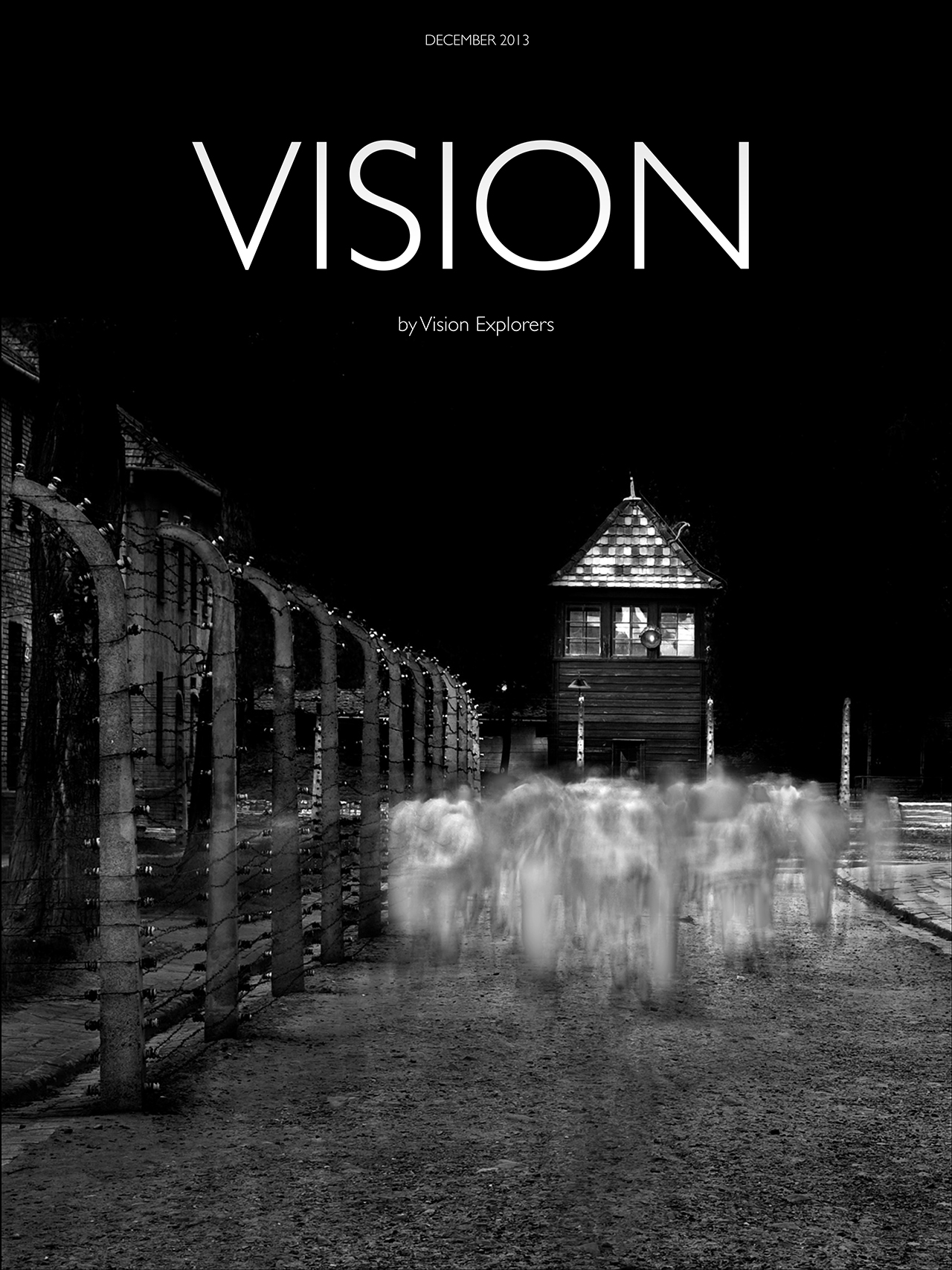
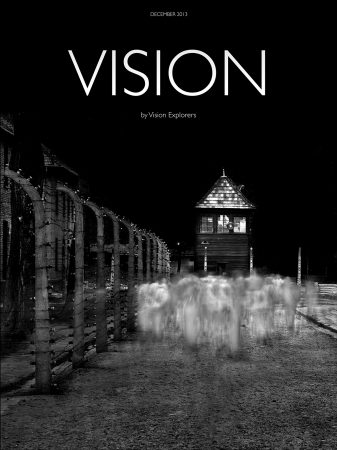
Are you familiar with the new publication Vision? It’s produced by friends of mine: Joel Tjintjelaar, Sharon Tenenbaum, Armand Djicks and Daniel Portal.
What I love about this beautifully simple magazine is that it focuses on Vision rather than equipment, processes and techniques. Here’s a great quote from their website:
“You are an artist before you are a photographer”
Because we share such similar views on vision, they asked to speak with me about the vision that created “The Ghosts of Auschwitz-Birkenau.” The interview is in the December 2013 issue.
Vision is a relevant and important publication for those who seek to improve their creative abilities. Vision is free and you can subscribe here: http://visionexplorers.com/magazine/
You can view and enlarge the individual pages of the article below, or you can View the Entire Article Here
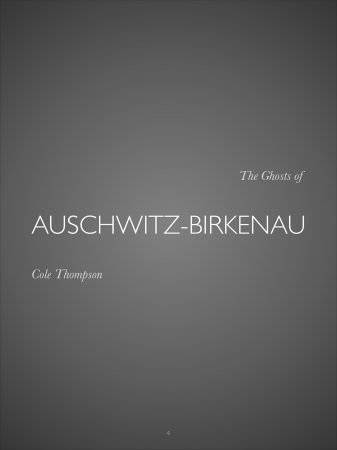


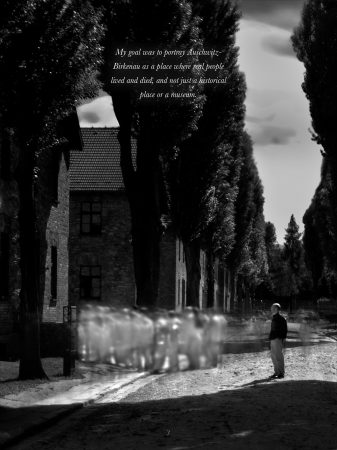
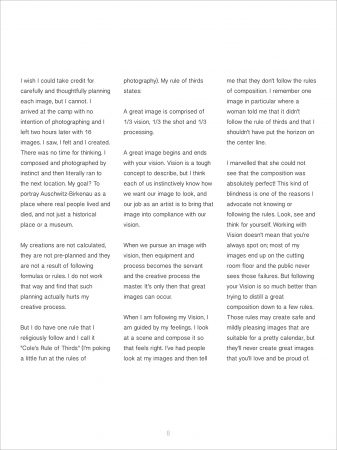
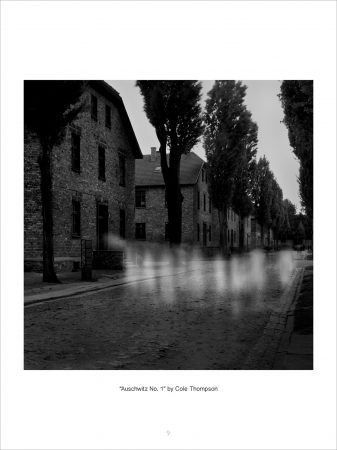
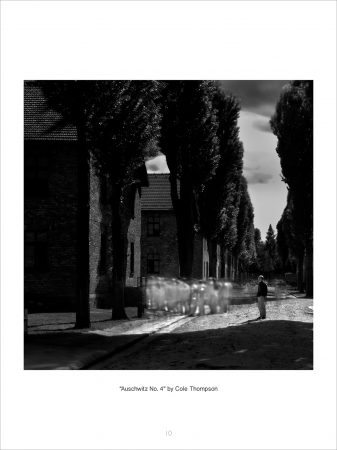
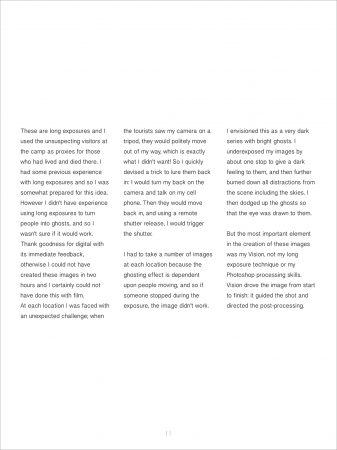
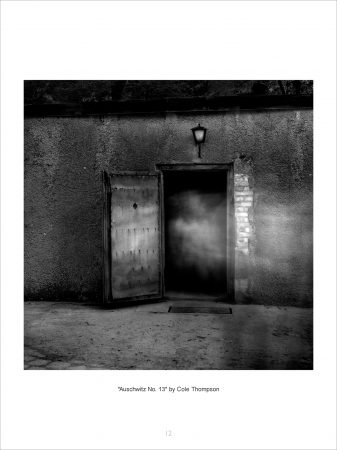
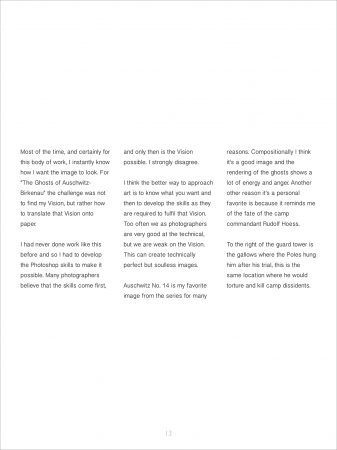
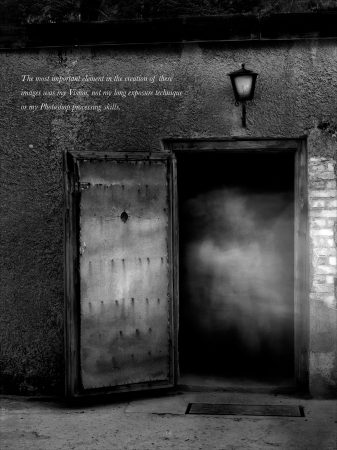
August 13, 2013
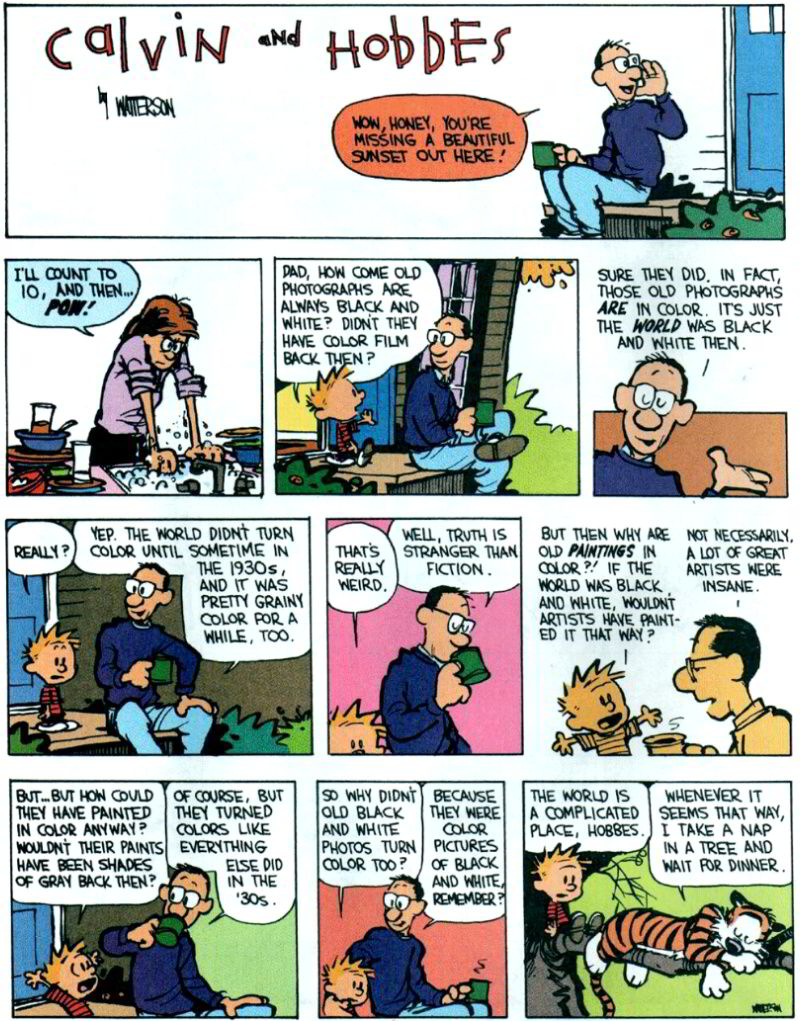

August 16, 2011



The truth about Black and White (according to Calvin and Hobbes).
http://www.reoiv.com/random.asp?img=dadbandwandcolour.jpg&page=2
Cole
P.S. Thanks to Ed Book for sending this to me.
June 1, 2011

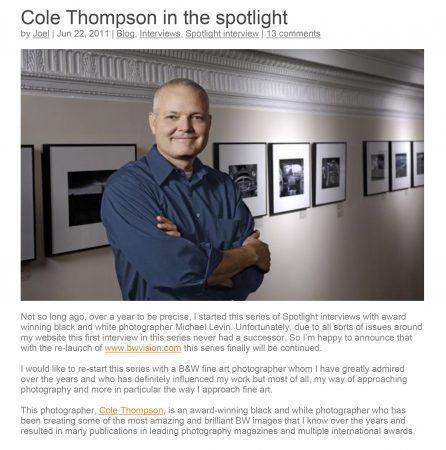
I don’t know if you’re familiar with Joel Tjintjelaar, but he’s a good friend of mine from the Netherlands. He’s also an amazing B&W photographer AND owns and runs BWVision.com. Joel is really busy!
Joel just interviewed me for his blog and you can read it here: BWVision Interview with Cole Thompson
You’ll want to keep an eye on BWVision.com over the next several weeks.
Cole
P.S. This is an image from my trip to Hawaii last week. A few more to come in my next newsletter.
June 26, 2010
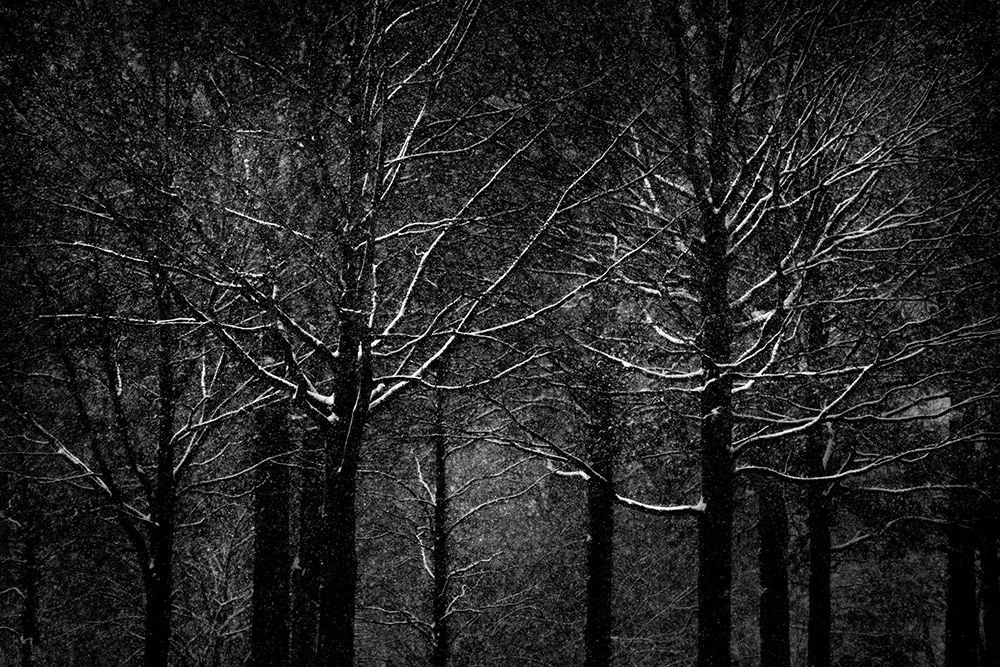


Printing is a very large topic, but it doesn’t need to be a complicated one. I keep my printing process simple because I’ve found that the fewer the steps, the fewer things there are to go wrong. As I said in a previous blog entry: “Let me oversimplify and summarize it this way; I produce my prints with a copy of Photoshop and an Epson printer, and that’s about it. You don’t need complicated or expensive extras to create great black and white prints.”
Here are my guidelines for great B&W prints:
1. Start visualizing the print the moment you look at the camera’s preview screen.
Have you noticed how great the image always looks on that little screen? One of the reasons it looks so good is because it uses transmitted light, or in other words the image is back-lit, and that produces an image that is very bright and contrasty. Unfortunately a print uses reflected light and that just cannot hold a candle to that little screen. I have to work very hard to get my print to look that good and I use preview screen image as my goal; it will not look exactly the same, but it will have that same pop and sizzle.
2. Make sure you have true blacks and true whites.
When people come to me with the complaint of flat and dull prints, I almost always find that it’s because they do not have true blacks or whites in their image. To know if you have a true black and a true white, you must look at the histogram because your eyes cannot judge this accurately by looking at the monitor. There are several ways to get a true black and white, such as using Levels, the contrast control (not recommended) and by dodging and burning. Whatever method you use, have that histogram open and let it be your guide.
3. Contrast is what makes the image pop.
Look at the image above, it has a great deal of contrast and that’s what makes my images pop. To increase contrast many people instinctively go for that nasty contrast control, I say nasty because it generally has nasty unintended consequences like blocking shadows and blowing out highlights. There are other ways to improve contrast such as Levels and my favorite; Dodging and Burning.
4. When you get the image to look good on screen, then you have to go further still.
An image that looks good on screen with transmitted light will look flat and dull when viewed as a print with reflected light. So once it looks good on screen, you must go further and increase your blacks, increase your whites and increase your contrast. While you’re pushing the image further, your instinct will be to stop because the image can start to look artificial, but with time and experience you’ll come to know how far you need to go and how far you should go.
5. Don’t Search for the “Perfect Paper.”
There are thousands of paper choices these days and you shouldn’t get hung up on finding the “perfect” paper, there’s no such thing! There are many great papers and you simply need to find one that is suited to your work. I use either Hahnemuehle Photo Rag 308 which is a matte paper or Epson Exhibition Fiber which reminds many of an air-dried “F” surface, reminiscent of the darkroom days. I find that these two papers work for 99% of my work.
Why choose a matte or a glossy? A lot of it has to do with your personal preferences and the vision you have for the image. The Hahnemuhle is a “fine art paper” that has a nice texture and works well with most of my images. I use the Epson Exhibition Fiber for prints when I want a more “traditional” look and when I want a bit more pop from the blacks. Glossy/semi-gloss papers will always give you better blacks than matte papers, but the differences between the two are minimal when they are put under glass. Another reason I prefer matte papers is that under glass there is no reflection off the paper surface, I find that reflection on glossy paper very distracting.
6. Spend good money and get a good printer.
Unfortunately this is an area where you must spend some good money to get a good print. General purpose home or office printers just cannot produce a great black and white print. I love the Epson printers and their K3 inks, but the other big names produce nice work too.
I am often asked about special inksets and profiles and RIP’s. I don’t use them, I find the Epson ink and “Advanced Black and White Mode” gives me everything I need and it keeps my workflow simple.
7. Avoid the extras.
I know that people swear by such things as profilers, calibrators, b&w converters, plug-ins and RIP’s, but from my experience they only add a little bit to the image and they really complicate the workflow. Another danger of using these extras is that you can lose sight of your objective and get caught up in the process. So my advice is; put those extras away until you can produce a great print using the basics, and then you might consider getting them out again (but I’m guessing you won’t!).
8. Look at the print the next morning.
Sometimes you can stare at a print for so long that you get a distorted view of it, so leave it for the morning and look at it with fresh eyes. You’ll often find that you’ll want to tweak it again. Fresh eyes are always good.
Producing a great print doesn’t have to be complicated, in fact “complicated” just gets in the way of a great print. Keep it simple, standardize your workflow and become very good at the basics and you’ll soon have a procedure that produces great prints and is reproducible.
Cole
September 16, 2009

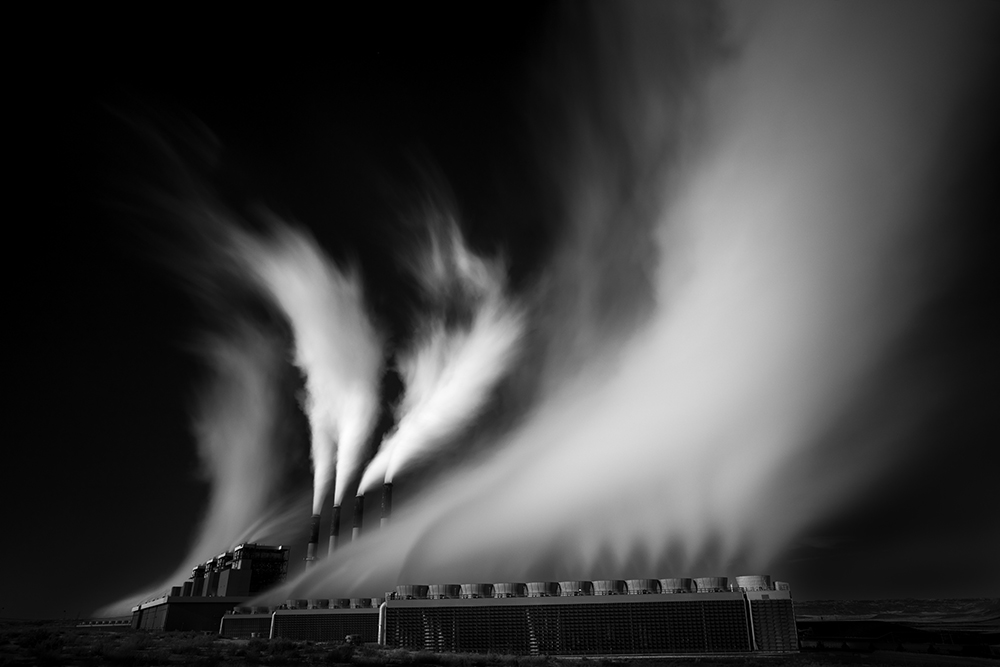
Have you heard about the many tools designed to give you great black and white images? There are special b&w conversion programs, plugins to make your images look like a specific type of b&w film, monochrome ink sets, custom print profiles, hi-tech monitor calibrators and more.
Are all of these necessary to produce a great print? I don’t know, but I don’t use them. My philosophy is “keep it simple” and for me, these tools are just expensive distractions that might make a 2% difference in the look of my image, but it takes the focus off of the 98%, the things that really matter.
Here are the secret tools and techniques that I use to create a great b&w image:
1. Start with the right shot. Certain images tend to lend themselves to b&w more than others and I look for subjects with great blacks and contrast opportunities.
2. Shoot in RAW and B&W mode. This will allow you to see the image on the camera display in b&w (making visualization easier) but the RAW image will still be in color, allowing you to convert it how you like.
3. Do as much in the RAW conversion process as possible.
4. Convert to b&w in Photoshop using the B&W Conversion tool (never desaturate or simply remove the color). Play with the color sliders to see how each will change the image and produce better contrasts. These sliders are like adding color filters to the lens, but after the fact and can make a dramatic difference in the image.
5. Don’t overuse the global controls. I try to avoid them whenever possible because they apply the effect to the entire image instead of selectively. I use dodging and burning as my primary tool, which allows me to change the image just where it is needed.
6. When dodging and burning, work slowly! I typically set the dodge/burn tool exposure to 1-3% and hardness to 0. Then I work very very slowly and let the effect build.
7. Use a pen and tablet to dodge and burn. The pen gives you precise control and the tablet is pressure sensitive. A mouse cannot do a good job of dodging and burning like a pen and tablet can. And purchase the largest tablet you can afford, once you learn how to use it, you will become addicted and it will become your primary processing tool.
8. Use a decent printer. Like cameras, there are many good printers but I love the Epson series with their wonderful K3 inks, and the included “b&w print mode” gives fantastic results.
9. Use a good paper, but be careful not to get caught up in the search for the “perfect paper.” I have friends who have been searching for years and the truth is that there are many wonderful papers out there that will server you well. I personally use Hahnemuhle Photo Rag 308 and Epson Exhibition Fiber.
~
Let me oversimplify and summarize it this way; I produce my prints with a copy of Photoshop l, a pen and tablet and an Epson printer, and that’s about it. You don’t need complicated or expensive extras to create stunning black and white prints.
Now I’m not saying those extras cannot improve your prints, I’m just suggesting that the time to experiment with the extras is after you’ve produced the best print you can with the basic tools and can go no further. Until then, that 2% extra improvement will just be an expensive distraction.
This is just my opinion of course, and there are many who might disagree, but I’ll let my images speak for themselves.
Cole
June 12, 2009
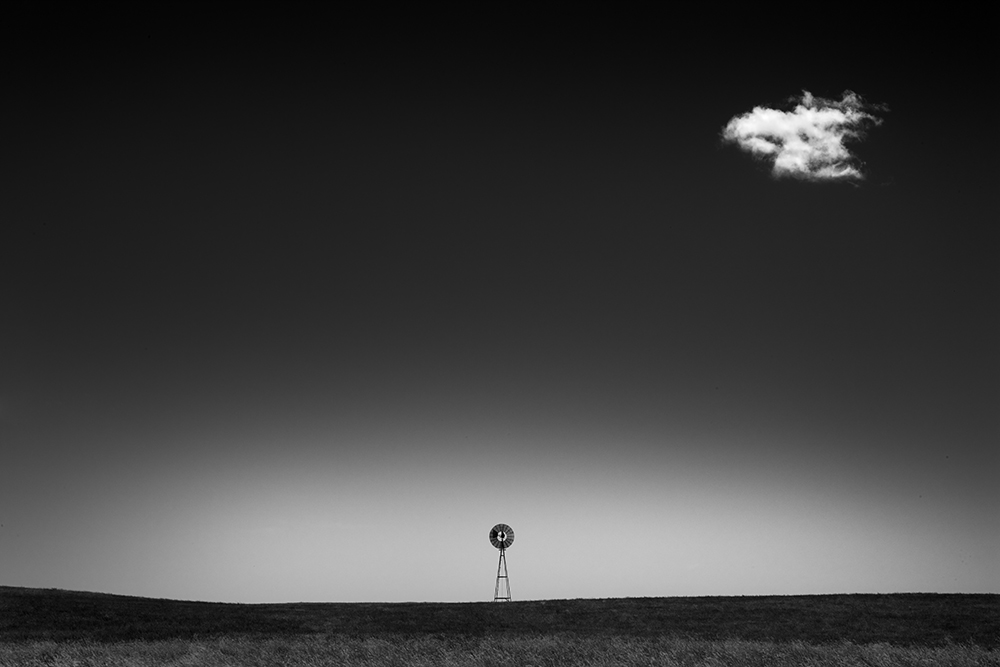
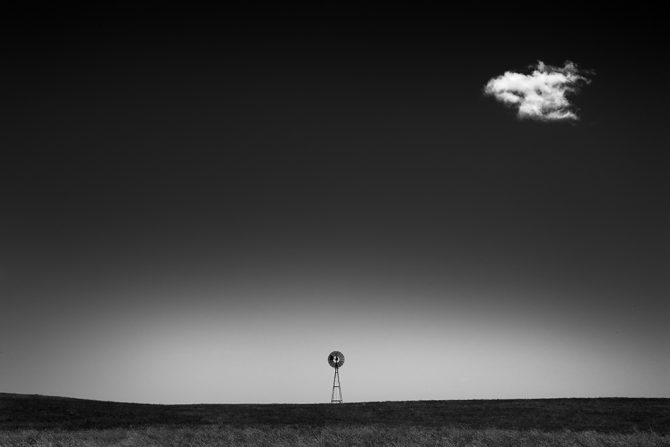
When I created my first Harbinger image, I broke the “centering” rule.
When I created the next and the next and the next, I centered them also. It just felt right.
But about a week ago I created the new image above, and decided not to center the cloud.
The definition of “harbinger” is:
\?här-b?n-j?r\ noun
That is exactly what I see when I create each Harbinger image, a foreshadowing of future events.
May 29, 2009
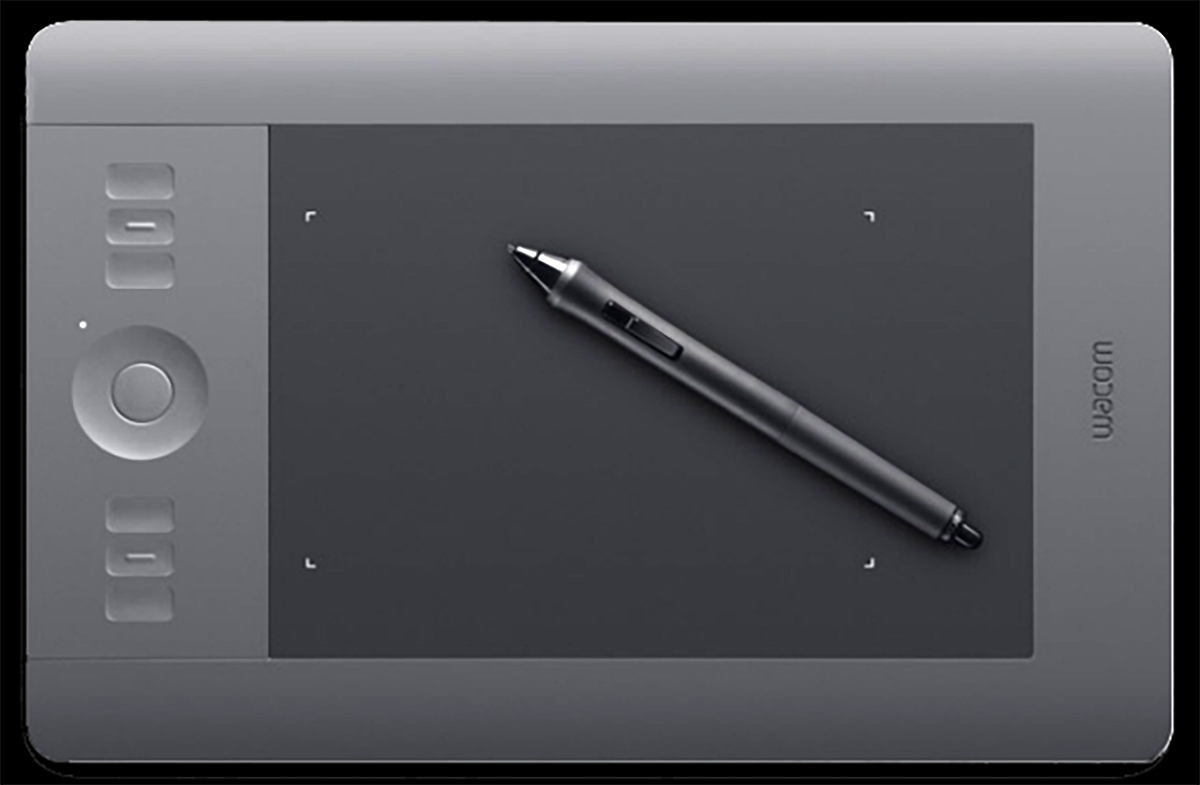
James wrote and asked:
“Can you tell me how to get better at dodge and burn. I try and try, but I overdo the blacks and whites and get an image that’s too contrasty. Any tips you can give me would be great.”
This is a very common question and issue, and one that can easily be addressed.
First a little background, for those who don’t follow my workflow, it’s a very simple one. I primarily adjust brightness and contrast and then dodge and burn the image in a fairly detailed and intricate manner.
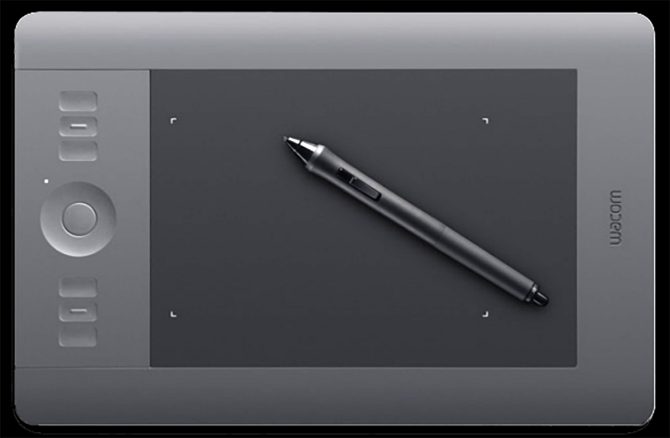
To successfully dodge and burn you must own a pen and tablet, a small 4X6 Bamboo tablet can be purchased for about $100 and a larger one is very nice if you can afford it. I like Wacom tablets.
When you dodge and burn there are four basic controls you want to be aware of; Diameter, Exposure, Hardness and Range.
The “diameter” of the brush is simply how large the brush is and choosing a brush size is generally obvious; big brushes for big areas and little brushes for little areas. The larger the brush is, the easier it is to blend in your work and make it look natural. So for big areas such as skies, use a very large brush. Obviously for bringing out the highlights on tree branches you want a brush about the size of what you’re dodging.
The “exposure” or strength of the brush is perhaps the most critical setting and the easiest to abuse. I generally use an exposure of 4% and work the dodge/burn very slowly, building up the areas with many passes of the pen. I often see people going at it with 50% and this where things get overdone and artificial looking. Think of dodging/burning as painting the image, you must work slowly and carefully.
The hardness is how hard of a edge you want on the brush. I generally work with a 0% brush for areas such as skies. When you are working in very small areas with very sharp detail, you might choose a small and hard brush, so that you can confine the dodge/burn to a very tight area.
The “range” of the dodge/burn refers to the range of values you’re affecting, either the highlights, midtones or shadows. This is the hardest technique to describe (it’s much easier seeing it being done). If you set your dodge to highlights, then your brush is brightening the highlights and ignoring the midtones and shadows. While this three setting separation works pretty good, you have to be careful because the highlight dodge will tend to bleed over to the lighter midtone areas as well. So you might choose to use a smaller brush and confine your dodging to just the highlights that you want to brighten. Likewise with the burn tool, if you set it to shadows you can generally darken just the shadows, but again be careful not to affect those darker midtones.
In general, I’ll dodge my midtones to bring out detail in shadow areas and my highlights to increase contrast and make my images pop. I’ll generally burn my midtones and shadows to darken down my images. I rarely will dodge shadows or burn highlights.
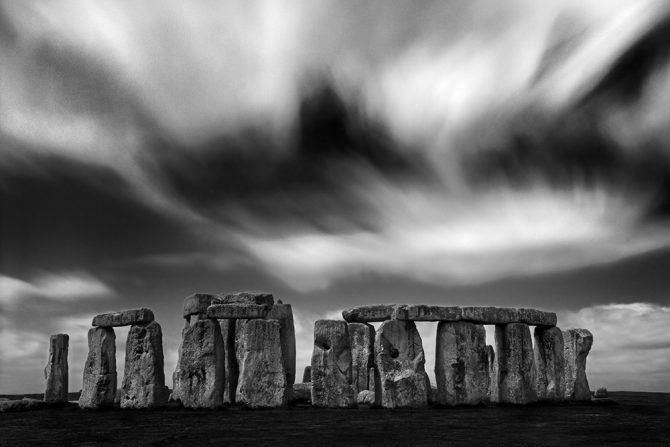
An example: The image above was created recently at Stonehenge; I wanted to darken the blue sky, increase the contrast in the clouds, darken the foreground and stones and bring out the highlights in the stones.
I started with the sky, if I had tried to darken the sky with a big brush, I’d have also darkened parts of the stones I didn’t want to. If I had tried darkening the sky with a smaller brush, I’d have done a blotchy job of it and I’d have created halos where the stone and sky met. So instead, I masked out the sky so that I could process it separately without affecting the stones, and then I reversed the mask so that I could process the stones without affecting the sky. I’ll address my masking techniques in another article.
First I took a midsized midtone brush and burnt the blue sky and some of the darker parts of the clouds. Then I used a medium sized midtone brush to dodge the highlights in the clouds and then did the same with a midsized highlight brush. Going back and fort between dodging and burning, and working slowly, I created a dark sky and contrasty clouds.
All along this process I keep careful eye on my histogram. Your eye doesn’t always accurately tell you if your blacks are dark enough or when your whites get blown out, so the histogram is my constant companion.
Then I reversed the mask so that I could work the foreground and not affect the sky. I burned the grass almost to black with a large brush set to shadows. Then I burn the stones down, first with the midtones and then the shadows and finally I brought up the highlights on the stones with a stronger dodge.
The result is my preferred dark image, with strong contrasts. lots of 100% blacks and 100% whites.
So summarizing; get a tablet, set your exposure low to 1-4% and work slowly, alternating between the dodge and burn. When necessary, mask and work each part separately. Paint and caress your image like a painter would a canvas!
I know this is a quick overview, but a lot of what you need to learn will come from doing, not reading. So get out and do!
Cole
April 23, 2009
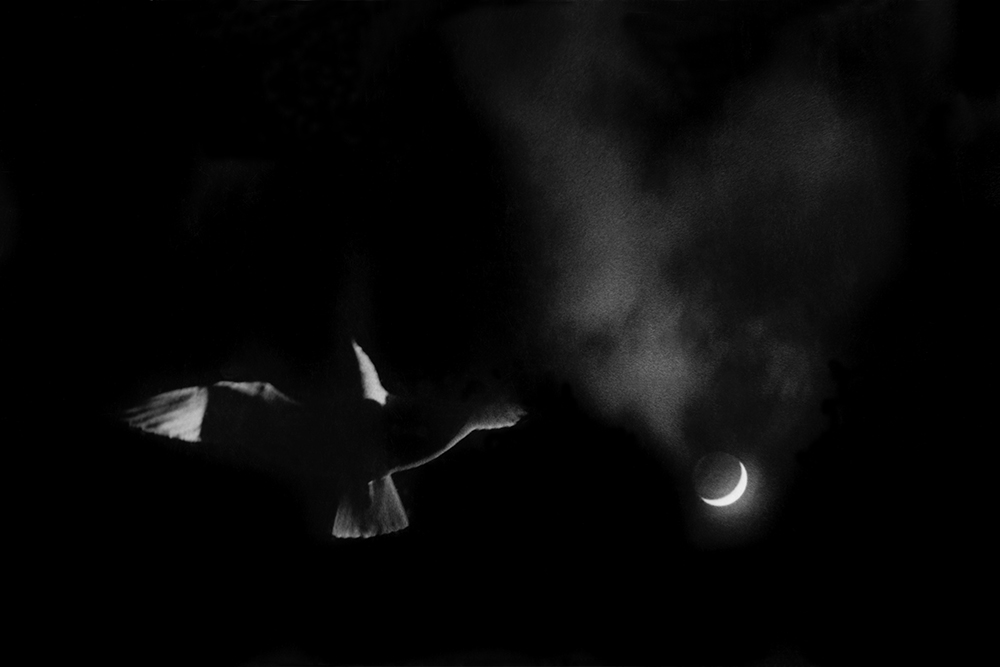
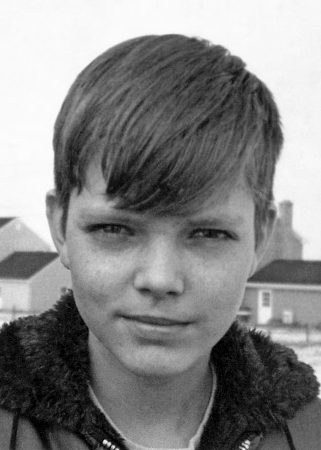
At 14 years of age, I knew that I was destined to be a fine art photographer.
Even at this early age I found myself drawn to a particular style of image, one that would literally cause a physical reaction in me. They were dark images created by Adams, Weston, Bullock and others. At age 14 I knew that I was destined to create such images.
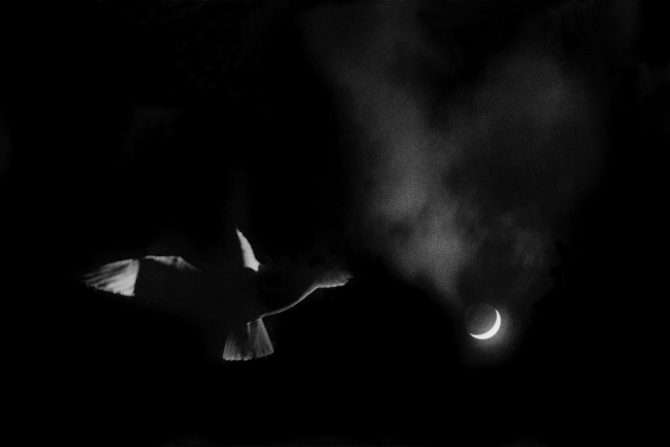
An important early influence in my life and my art was the poem “Invictus” by William Ernest Henley.
Out of the night that covers me,
Black as the Pit from pole to pole,
I thank whatever gods may be
for my unconquerable soul.
~
In the fell clutch of Circumstance,
I have not winced nor cried aloud.
Under the bludgeonings of Chance,
my head is bloody, but unbowed.
~
Beyond this place of wrath and tears,
looms but the Horror of the shade,
and yet the menace of the years,
finds, and shall find me, unafraid.
~
It matters not how strait the gate,
how charged with punishments the scroll,
I am the master of my fate:
I am the captain of my soul.
~
For me, this poem evokes dark images which form the inspiration for my photographs. Darkness in my images represents the trials of our human existence while the light represents the strength that comes from the realization that we are the captains of our souls.
Cole
April 9, 2009
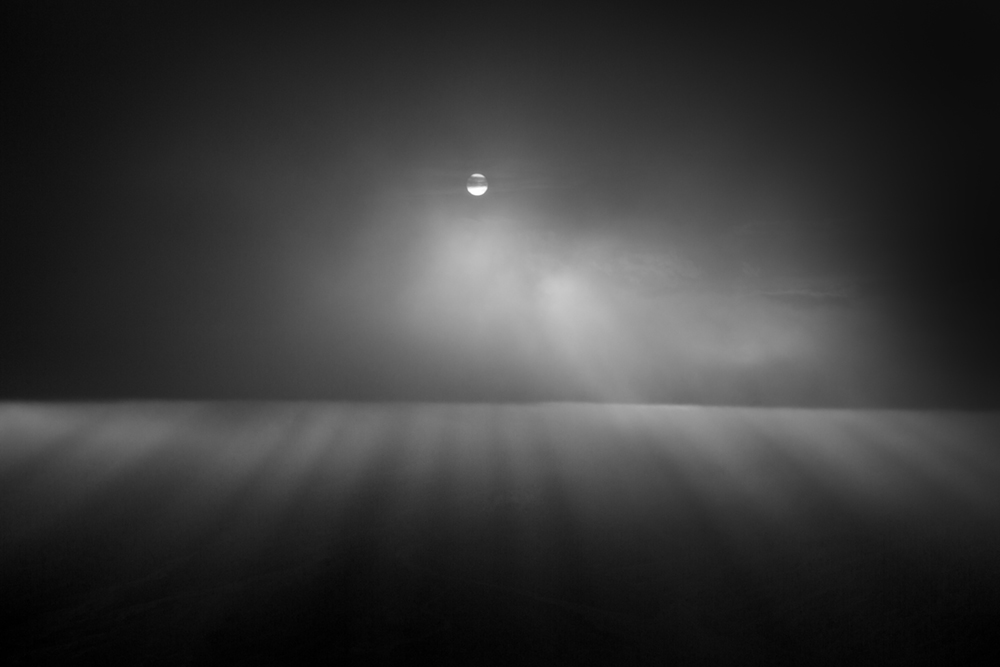
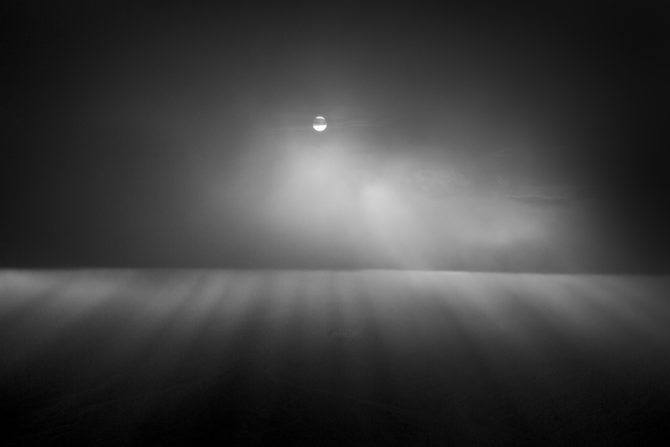
Ahhhhrrrrrrgggggg! I’m in an artistic slump! What do YOU do when this happens?
I get asked this question quite often, in fact weekly. While I don’t have “the” solution, I have “my solution” and perhaps the concept will work for you too?
The first thing I do, even though it’s hard, is to not panic. Panic and dwelling upon the problem just makes it worse. So relax and accept these two facts; slumps are normal and they will pass.
But I do find that there are certain things that can help the slump pass faster:
First, find something that inspires you artistically; for me it’s reading the Edward Weston Day Books and listening to the Beatles. Reading about Weston’s creative journey really excites me, almost immediately, and makes me want to get out and start shooting again. This man has always been my photographic idol and a true bohemian artist.
Listening to the Beatles inspires me in different way. Some musical groups have success with a certain sound and then they stick with that sound forever and ever, either because they are not creative enough to evolve or because they are afraid to change the sound that made them famous. Not so with the Beatles, they thrived when exploring new sounds and changing their style. That inspires me to do the same.
The next thing I do, and it’s a hard one, is to keep shooting with no expectation of doing good work. Just go out like you used to when you first discovered photography, shoot to have fun. Accept that you’ll bring home absolutely nothing of value and just enjoy the journey.
Now this last point I raise at the risk of fanning the flames of protest that I kindled a few weeks ago. During this time of wandering in a barren desert of creativity, I find that I can get a bit down on myself and question whether or not I’m any good, if I’ve ever done anything good, and if I ever will do anything good in the future. At these low points I find that looking at other photographer’s work is very depressing! I see how many great photographers there are out there and I just want to give up. So for me (please note this qualifier) I do not look at other photographers’ work when I’m down
Really, everyone goes through these periods and I promise they will pass. Just relax and enjoy the journey.
Cole
